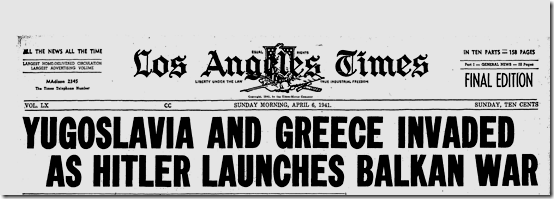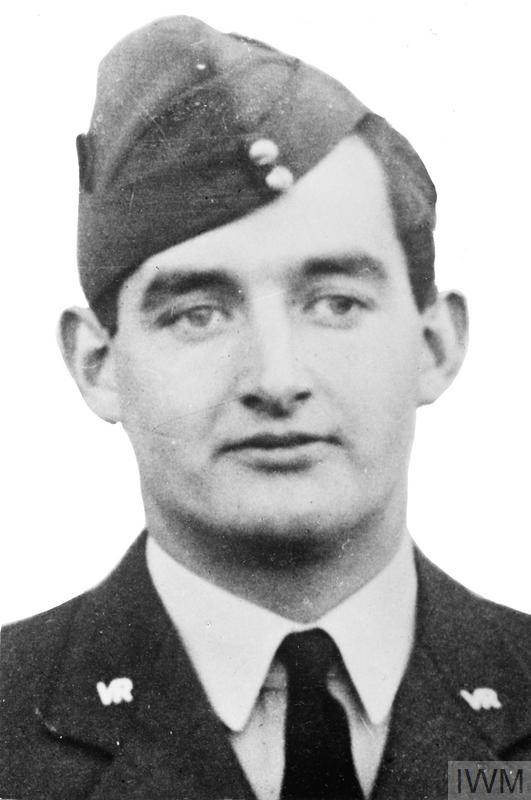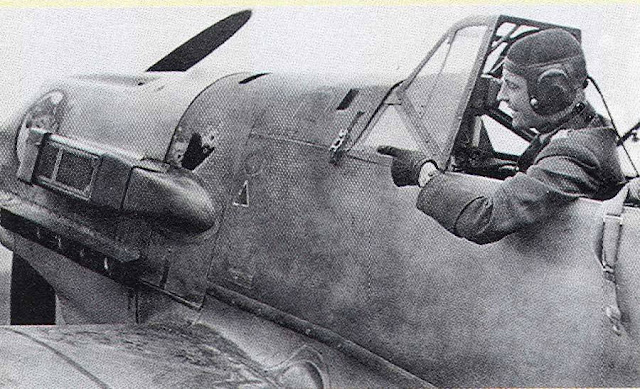Sunday 6 April 1941
 |
| Operation Retribution, Belgrade, Yugoslavia, 6 April 1941. |
Hitler's order of the day to the troops reads in part (it is quite lengthy, usually they are maybe a paragraph long):
Since early this morning the German people are at war with the Belgrade Government of intrigue. We shall only lay down arms when this band of ruffians has been definitely and most emphatically eliminated, and the last Briton has left this part of the European Continent. These misled people realize that they must thank Britain for this situation, they must thank England, the greatest warmonger of all time.Hitler reveals his real reason for Operation Marita in this order's opening paragraph. The Yugoslavs and Greeks pose no threat to Germany. However, Hitler worries about the British presence in that region of the continent. His worry is not about British land forces, but rather the RAF - as he later tells Marshall Mannerheim, he has nightmares of the Romanian oil fields burning from end to end from RAF attacks.
German Foreign Minister Joachim Ribbentrop is pithier: he notes that "a clique of conspirators" is the only reason Germany has had to unleash hell upon Yugoslavia. Italy declares war on Yugoslavia, while Hitler doesn't even bother.
 |
| Los Angeles Times, 6 April 1941, "Yugoslavia and Greece Invaded As Hitler Launches Balkan War." |
On the ground, things go smoothly for the Wehrmacht. The XL Panzer Corps (Lieutenant-General Georg Stumme) of Panzer Group Kleist of the 12th Army (Field Marshal Wilhelm List) crosses the Yugoslavian frontier from Bulgaria at dawn and, by evening, has reached the vicinity of Prilep, cutting the railway line. This is a huge achievement because Prilep is on the mainline from Belgrade to Thessaloniki. By severing the rail link, the Germans effectively cut the capital off from outside aid - or escape - except by air. The 2nd Panzer Division advances through the Struma Valley and is only slowed by poor roads. It captures Strumica right on schedule.
In addition, the German 2nd Army (General Maximillian von Weichs) is to drive south from Austria toward Belgrade. This eventually, if all goes well, form a giant pincer cutting the country in two. The Yugoslav Army is large (28 divisions) but no match for the German Heer (army). The Yugoslavs have inherited the racial and regional disparities of the old Austro-Hungarian Empire, and many divisions have no interest in fighting anyone. Only a handful of divisions actively resist the Wehrmacht invasion, and these primarily are composed of ethnic groups opposed to the Germans (Serb, Montenegrin and Albanian.
The Yugoslav Air Force is largely destroyed on the ground, losing an estimated 600 planes in the first wave of attacks. Creaky Luftwaffe planes such as the Dornier Do 17 and Junkers Ju 87 Stuka that have become liabilities over England retain their technological edge in the Balkans.
The Wehrmacht drive across southern Yugoslavia serves two purposes: it isolates Yugoslavia, and it also provides a springboard into Greece that is far to the west of the British. Once they get far enough west, the panzers can turn due south and drive straight to the port of Thessalonica (Thessaloniki), cutting the British troops off from their supply bases in southern Greece.
 |
| Wehrmacht motorcycle troops enter Greece, 6 April 1941. |
The Greeks have their troops far forward on the Metaxas Line, while the British are grouped further back in a natural switch position on the Aliakmon River. The Greek Army of Eastern Macedonia (Lieutenant General Konstantinos Bakopoulos) defends. The British are under the overall command of General Henry Maitland Wilson, commanding W Force, and have three Greek divisions, a New Zealand division, the Australian 6th division, and the British 1st Armored Brigade.
German XVIII Corps hits the Greek left flank, while XXX Corps attacks the right flank. The Germans make only limited progress on their invasion into Greece directly from Bulgaria, but that invasion is distinctly secondary to the operations in Yugoslavia for the time being. Realistically, the only point of the Germans attacking at all at this point and time is to hold the Allies in place and not allow them to shift troops to the west to meet the real thrust. In that sense, these troops serve the same purpose as the Italians along the coast.
Seven RAF squadrons support the Allied effort in Greece and, to a much lesser extent, Yugoslavia. The Greeks have 15 excellent divisions in Albania, but they are fully occupied by the Italians - an oft-overlooked service for those who think the Italians never helped Germany with its military.
 |
| "Portrait of Kenneth Campbell RAF, awarded the Victoria Cross: France, 6 April 1941." Campbell presses home his attack against the Gneisenau despite intense Flak and puts a torpedo into it. He is killed immediately after. © IWM (CH 4911). |
Having learned its lessons over London, the Luftwaffe puts them to use over Belgrade. It flies 500 sorties of Junkers Ju 87 Stukas and medium bombers over the Yugoslav capital, taking the city by surprise and pounding it. Huge fires erupt, destroying hospitals, public buildings and the royal palace. It is possibly the worst single aerial assault in the war so far, and perhaps of the entire war because it is against a completely undefended urban center and imbued with the lessons learned from the Luftwaffe's seven months of practice in terror-bombing British cities. An estimated 17,000 people perish during the next few days - nobody will ever know how many died each day.
The Luftwaffe (KG 307) also raids Piraeus, and this raid also is one of the classics of World War II. This is the main disembarkation point for Operation Lustre, the British expeditionary force on mainland Greece. The Germans get a lucky hit on munitions ship Clan Fraser. The ship is carrying 350 tons of high explosives and explodes in a massive fireball, killing six men, destroying 13 ships, wrecking the port facilities and inflicting massive casualties ashore.
During the Luftwaffe attack on Piraeus and explosion of the Clan Fraser, the casualties include, but are not limited to:
- Greek tug Elpis (sunk)
- Corvette HMS Hyacinth (damaged, two officers ashore killed).
- 7108-ton British freighter City of Roubaix (sunk)
- 1988-ton British freighter Cyprian Prince (sunk, four deaths)
- 1706-ton British freighter Patris (sunk)
- 1393-ton Greek freighter Acropolis (sunk)
- 3256-ton Greek freighter Styliani (sunk)
- 4792-ton Greek freighter Evoikos (sunk)
- Greek caique Halcyon (sunk)
- 6565-ton Greek freighter Petalli (on fire, scuttled outside the port)
- 5314-ton British freighter Goalpara (damaged)
- 7264-ton freighter Clan Cumming (damaged)
- 8474-ton British tanker Cingalese Prince (damaged)
- 6054-ton British freighter Devis (damaged, one death)
- 3100-ton British freighter Katie Moller (damaged)
- 1656-ton Greek freighter Agailiani (damaged)
- 4697-ton Greek freighter Constantinos Louloudis (damaged)
- 496-ton Royal Navy armed yacht HMY Surf (sunk)
- 386-ton British salvage vessel Viking (sunk)
- 146-ton Greek auxiliary Georgios (sunk)
US Secretary of State Cordell Hull weighs in on the German invasion, calling it "barbarous." The Yugoslavian military attache in Washington asks for as much immediate support as possible, including 700 aircraft, 100 tanks and so forth. The US is not in a position to supply anything immediately.
The RAF units based in Greece sends Wellington bombers against Sofia, Bulgaria.
The 2nd RAF Group raids a power station at Ijmuiden, Holland.
 |
| This picture apparently was taken during the KG307 raid on Piraeus Harbor by Hptm Hajo Herrmann of 6 April 1941. |
A telling political incident reflects the sensitivity of the situation and of the times. Lieutenant General Alan Cunningham, Commander in Chief of East Africa Command, orders Fowkes to slow down and let Wetherall enter the city first. He has to do this by a special order dropped directly on his position by an RAF plane, as Fowkes refuses to acknowledge radio orders telling him to let Wetherall have the glory of the capture. The reason for the stop order? Fowkes commands largely black African troops, while Wetherall commands white South Africans. It would "look bad" for the black Africans to get their first. Yes, this is completely racist and everyone knows exactly what is going on. That's the real world of the times, folks.
At Massawa, the Italians scuttle a number of ships before the nearby British take the port:
- 5877-ton freighter Antonia C.
- 2136-ton freighter Riva Ligure
- 8150-ton tanker Nazario Sauro
- 2722-ton freighter Tripolitania
- 2316-ton freighter Capitano Bottego
 |
| Hans-Joachim Marseille in his Messerschmitt Bf-109E JG27, 6 April 1941. |
Battle of the Atlantic: With the RAF now sending regular bombing missions overhead targeting cruisers Gneisenau and Scharnhorst, the German naval authorities decide to do something to protect them. Accordingly, they move the two ships out of their drydocks and anchorages in the harbor. They do so just at the wrong time.
The British are under the misapprehension that the two German cruisers are on the verge of another sortie into the Atlantic. Desperate to stop this, the RAF quickly takes note of their change of positions and switches from bombs to torpedoes for another attack while they are still in port. They send a massive formation of 71 Bristol Beauforts against the ships, and one, piloted by Flying Officer Kenneth Campbell (KIA, receives the VC posthumously), makes a successful torpedo run and gets a hit on the Gneisenau. While not threatening to the survival of the ship, the hit roughly beneath the aft main turret causes 3000 tons of water to enter the ship. There is tremendous internal damage due both to the concussive effects of the detonation on electronic components and stresses on the centerline propeller shafts. The ship quickly is returned to dry dock.
In addition to the attack on Brest itself, RAF Coastal Command attacks three German destroyers sailing off Brest on unrelated business. A couple of near misses do not cause any appreciable damage, nor does a failed submarine attack.
In addition to the RAF attacks, the Royal Navy puts its major surface vessels out to sea to confront the expected escape by the Gneisenau and Scharnhorst. However, since the two ships do not leave Brest, the British ships - led by battlecruiser HMS Hood in Scapa Flow and HMS King George V at Gibraltar - return to port.
U-94 (Kptlt. Herbert Kuppisch) is operating in the Atlantic southwest of Iceland when it spots a 5580-ton Norwegian freighter, Lincoln Ellsworth. Kuppisch puts a torpedo into the ship, then surfaces and finishes it off with his deck gun. Everyone survives.
The Luftwaffe bombs and sinks 5149-ton Norwegian tanker Lincoln Ellsworth northwest of Scotland in the general vicinity of Rockall. There are two deaths.
The Luftwaffe bombs and sinks 7156-ton Greek tanker Nicolaou Zografia in the Northwest Approaches a bit to the southwest of the Lincoln Ellsworth. Everyone survives.
The Luftwaffe bombs and sinks 2252-ton British freighter Olga in the Northwest Approaches. Four crew perish.
The Luftwaffe bombs and sinks 289-ton British trawler Daneland just west of Rathlin O'Birne Island off the west coast of Ireland. Everyone survives.
The Luftwaffe bombs and sinks 352-ton Faroes trawler Naeraberg south of the Faroes Islands. Everyone survives.
The Luftwaffe bombs and damages 7525-ton British tanker Glenfinlas off Harwich. There are eleven deaths. The tanker is towed to Harwich, and then to the Tyne for repairs.
Royal Navy 336-ton armed yacht HMY Torrent hits a mine and sinks off Falmouth. There are a number of deaths on the yacht, including the commander, Lieutenant K. Sinclair RNR.
Royal Navy 15,400-ton armed merchant cruiser HMS Comorin suffers an accidental fire and is wrecked off Freetown. There are fourteen deaths, but 405 men survive. Destroyer HMS Broke scuttles the blazing cruiser.
Convoys OB 308 and OB 58 depart from Liverpool, Convoys HX 119, 119A and 119B depart from Halifax.
 |
| Damage in Belgrade caused by the 6 April 1941 raid. |
British Middle East Commander General Archibald Wavell has become increasingly worried about the course of the campaign in Libya under new General Officer Commanding & Military Governor of Cyrenaica Lieutenant-General Philip Neame. Wavell has sent the man that Neame replaced, Lieutenant-General Richard O'Connor, who arrived yesterday, to see if he can be of help. Nobody at Neame's headquarters really knows where the Afrika Korps panzers are, but everyone knows they are getting closer. Accordingly, Neame and O'Connor lead a small convoy of vehicles to a new headquarters further back. However, the Afrika Korps is even closer than they obviously thought, because advance motorcycle units under Gerhard von Schwerin capture the convoy and the two generals. The Germans quickly spirit the two bemused officers to imprisonment in Italy, along with a travelling companion and now fellow prisoner Brigadier John Combe.
The 9th Australia Division, which starred in Operation Compass against the Italians, now is in rapid retreat against the Germans. It falls back into Tobruk, considered the most defensible position in Libya. Joining it are what remains of the 2nd Armored Division which had been holding the front, along with the 3 Indian Motor Brigade. The Australians and others have no interest in evacuating through the port, but rather intend to make a stand in the same place that they themselves captured in January.
Rommel's forces close the pincer on Mechili between Italian and German troops and capture about 3000 British soldiers. Rommel leads from the front, as is his habit. Afrika Korps also takes Msus. One might think that this would be viewed by headquarters as a monumental victory - but in Berlin, the high command is dismayed that so many British have escaped to Tobruk.
Convoy AC 3 departs from Alexandria bound for Tobruk, Convoy AG 11 (five British ships) departs from Alexandria bound for Suda Bay. The latter convoy, AG 11, is intended to beef up the British military presence on Crete.
 |
| Propaganda Minister Joseph Goebbels reads out Adolf Hitler's Order of the Day, 6 April 1941. |
- 4669-ton freighter Maroussio Logotheti
- 4391-ton freighter Yiannis
Battle of the Pacific: Australian Heavy cruiser HMAS Australia has an accident while launching its Seagull floatplane. The catapult fails and the plane crashes, killing the pilot and seriously injuring the two others on board.
Soviet/Yugoslavian Relations: While the Soviet Union and Yugoslavia date their friendship/nonaggression treaty document 5 April 1941, it is not until 01:30 today that the two parties actually sign it. This is not unusual in diplomatic circles; in fact, the famous Ribbentrop/Molotov Agreement of 23 August 1939 actually was signed at 02:00 on the 24th. However, some read hidden meaning into this date issue, viewing it as a way for the USSR to avoid appearing to time the document during the German invasion of Yugoslavia. There are two problems with this: the Soviets like to have versions typed and dated and signed later as their typical practice (it takes a lot of typist time and effort to keep reformatting things in multiple copies), and there is no evidence whatsoever that the Soviets know that the Germans will launch their Balkans invasions about 4 hours later. It is, though, a possibility that they do know and want to avoid offending Germany.
Holocaust: The Germans in Poland transfer 1021 prisoners incarcerated at Pawlak Prison in Warsaw to Auschwitz. This includes many prisoners who are there for ordinary crimes. For instance, five famous actors (in Poland) incarcerated for murdering a pro-German actor are among those transferred to the death camp.
American Homefront: Craig Wood, 39, wins golf's Masters Tournament. It is his first Major victory after losing all four Majors at various times in extra holes.
 |
| Yugoslavian infantry surrendering, 6 April 1941 (German Federal Archive: Bild 146-1975-036-24). |
April 1, 1941: Rommel Takes Brega
April 2, 1941:Rommel Takes Agedabia
April 3, 1941: Convoy SC-26 Destruction
April 4, 1941: Rommel Takes Benghazi
April 5, 1941: Rommel Rolling
April 6, 1941: Operation Marita
April 7, 1941: Rommel Takes Derna
April 8, 1941: Yugoslavia Crumbling
April 9, 1941: Thessaloniki Falls
April 10, 1941: USS Niblack Attacks
April 11, 1941: Good Friday Raid
April 12, 1941: Belgrade and Bardia Fall
April 13, 1941: Soviet-Japanese Pact
April 14, 1941: King Peter Leaves
April 15, 1941: Flying Tigers
April 16, 1941: Battle of Platamon
April 17, 1941: Yugoslavia Gone
April 18, 1941: Me 262 First Flight
April 19, 1941: London Smashed
April 20, 1941: Hitler's Best Birthday
April 21, 1941: Greek Army Surrenders
April 22, 1941: Pancevo Massacre
April 23, 1941: CAM Ships
April 24, 1941: Battle of Thermopylae
April 25, 1941: Operation Demon
April 26, 1941: Operation Hannibal
April 27, 1941: Athens Falls
April 28, 1941: Hitler Firm about Barbarossa
April 29, 1941: Mainland Greece Falls
April 30, 1941: Rommel Attacks
2020
No comments:
Post a Comment